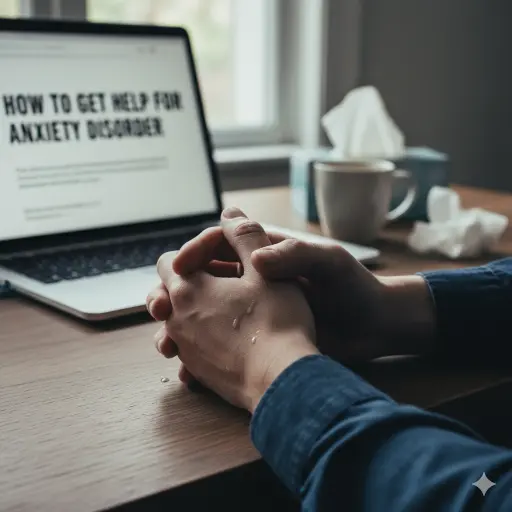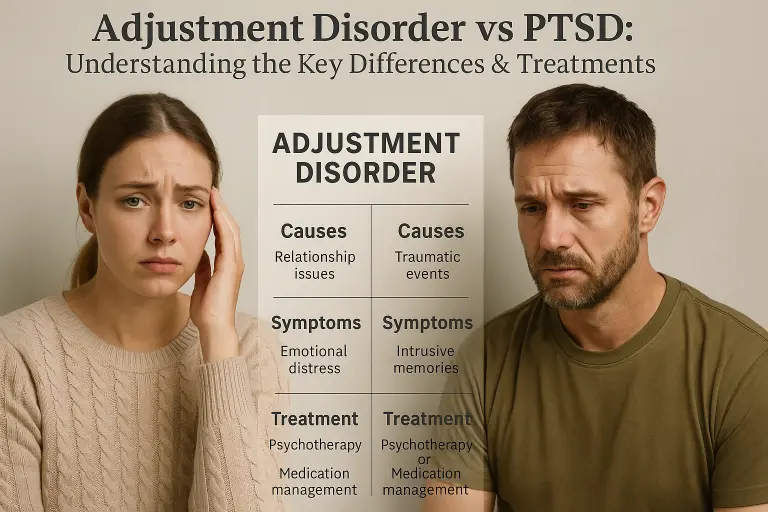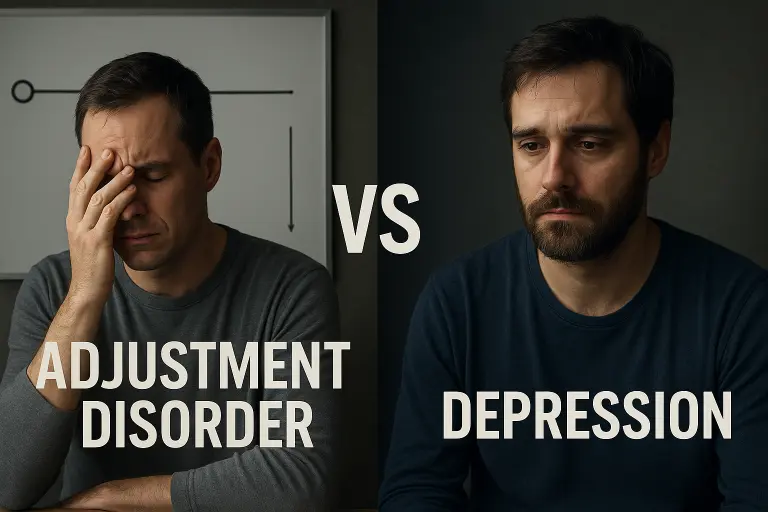Intrusive Thoughts: The Driving Force Behind OCD
Explore the role of intrusive thoughts in OCD and uncover effective management strategies for better mental health.

Understanding Intrusive Thoughts
Definition of Intrusive Thoughts
Intrusive thoughts are unwanted and involuntary thoughts that can enter a person's mind. These can manifest as distressing mental images, feelings, memories, or urges to do something that may be against a person's values or beliefs. Such thoughts can be unsettling and cause significant anxiety. While they can frequently occur, especially in those with obsessive-compulsive disorder (OCD), they do not reflect a person’s true personality or desires. According to Medical News Today, these sudden and upsetting thoughts often contradict a person's wishes and are usually of a negative nature, such as dark or frightening scenarios.
| Aspect | Description |
|---|---|
| Nature | Unwanted, involuntary |
| Common Themes | Negative, dark, frightening |
| Relation to OCD | Often exacerbated, causing distress |
Impact of Intrusive Thoughts
The impact of intrusive thoughts on individuals, particularly those with OCD, can be profound. These thoughts can escalate into obsessions, where a person repeatedly thinks about the intrusive content, ultimately leading to compulsive behaviors. This cycle often results in distress, anxiety, and significant emotional upset. As noted by Medical News Today, compulsions are actions performed in an attempt to alleviate the anxiety caused by these thoughts. However, this relief is typically temporary, and the cycle of compulsions can become increasingly severe over time.
| Emotional Response | Description |
|---|---|
| Fear | Intense fear due to the nature of intrusive thoughts |
| Anxiety | Increased anxiety leading to compulsive behaviors |
| Distress | Ongoing emotional upset from repetitive thoughts |
Triggers for these intrusive thoughts often include life stressors. Although these thoughts are distressing, they are not harmful and do not indicate a hidden desire to act upon them. Understanding the role and impact of intrusive thoughts in OCD can be pivotal for finding effective management strategies and seeking appropriate help. For further reading, consider exploring details on common obsessions and compulsions in OCD.
Relationship with OCD
Intrusive thoughts play a significant role in the manifestation of Obsessive-Compulsive Disorder (OCD). They can lead to uncomfortable feelings and behaviors that profoundly affect an individual’s daily life.
Obsessions in OCD
Obsessions in OCD manifest as unwelcome and distressing ideas, mental images, or impulses that occur repeatedly, often consuming several hours of a person's day. These obsessive thoughts are not merely passing worries; they are persistent and significantly disrupt normal functioning. Individuals may try to ignore these thoughts or alleviate their distress through various means, including compulsive behaviors.
Specific examples of common obsessions include fears of contamination, worries about harming oneself or others, or doubts about whether a task has been completed thoroughly. These enduring thoughts can create a cycle of anxiety and distress, which may lead individuals to engage in compulsive actions as a means of coping.
Compulsions in OCD
Compulsions are repetitive behaviors or mental acts that individuals feel compelled to perform in response to their obsessions. These compulsions are often intended to reduce anxiety associated with intrusive thoughts or to prevent a feared event from occurring. It's important to note that engaging in these rituals usually provides little to no actual pleasure and may only offer temporary relief from anxiety.
Common compulsions include:
| Type of Compulsion | Description |
|---|---|
| Reassurance Seeking | Asking others for comfort that everything is okay. |
| Information Seeking | Searching for information to alleviate uncertainty. |
| Mental Reviewing | Repeating actions or reviewing thoughts in one's mind. |
| Avoidance | Steering clear of places or situations that trigger intrusive thoughts. |
These compulsive actions are often seen as necessary by the individual to stave off feelings of dread related to their obsessions. However, involvement in these behaviors can ultimately perpetuate the cycle of OCD, leading to increased distress and an even greater reliance on compulsions to manage intrusive thoughts.
Individuals diagnosed with OCD may benefit from interventions such as Exposure and Response Prevention (ERP) therapy, which helps them confront and disengage from compulsive behaviors in response to intrusive thoughts. This gradual exposure aims to lessen the power that obsessions hold over one's life, allowing individuals to regain control and reduce anxiety. Understanding the role of intrusive thoughts in OCD is crucial for developing effective management strategies. For more information about the types of obsessions and compulsions, visit our article on common obsessions and compulsions in ocd.
Cycle of OCD
Understanding the cycle of Obsessive-Compulsive Disorder (OCD) is crucial for grasping how intrusive thoughts play a significant role in this condition. This cycle typically involves four distinct parts: Obsession, Anxiety, Compulsion, and Temporary Relief. Each step feeds into the next, creating a continuous loop of distressing thoughts and behaviors.
Causes of OCD
Several factors contribute to the development of OCD. Research indicates that both negative life experiences, such as trauma, and individual temperament can increase susceptibility to the disorder. Furthermore, structural and biological differences in the brain, alongside genetic influences, also play a role in how OCD manifests.
| Contributing Factors | Description |
|---|---|
| Negative Experiences | Traumatic events or significant stressors |
| Temperament | Individual differences in responses to stress |
| Biological Differences | Variations in brain structure and function |
| Genetics | Family history of OCD or related disorders |
Studies have shown that damage to specific areas of the brain, especially the basal ganglia, can lead to an increased recurrence of intrusive thoughts and compulsive behaviors. This damage may occur due to various causes, including insufficient oxygen supply, neurotoxic agents, and infections (News-Medical).
The OCD Cycle
The OCD cycle begins with an obsession — a persistent, unwanted thought that generates significant anxiety. This anxiety motivates the individual to perform a compulsion, which is a behavior aimed at alleviating the anxiety associated with the obsession. However, this compulsion typically provides only temporary relief, leading to the resurgence of the obsession and the start of the cycle again.
The following table outlines the four components of the OCD cycle:
| Cycle Component | Description |
|---|---|
| Obsession | An intrusive thought that causes anxiety |
| Anxiety | The distress felt in response to the obsession |
| Compulsion | A behavior performed to reduce anxiety |
| Temporary Relief | A brief period of calm before the obsession returns |
Research shows that while about 90% of non-clinical individuals have experienced similar intrusive thoughts, those diagnosed with OCD experience a much higher level of emotional distress related to these thoughts (ADAA). Understanding this cycle and its components is essential for those looking to manage OCD more effectively. Further exploration into managing these intrusive thoughts can be found in the sections on cognitive behavioral therapy (CBT) and exposure and response prevention (ERP).
Neurobiological Factors
Understanding the neurobiological factors involved in obsessive-compulsive disorder (OCD) is critical for grasping how intrusive thoughts manifest and affect individuals. This section examines the specific brain regions implicated in OCD as well as pertinent aspects of brain structure that contribute to this condition.
Brain Regions Involved
In patients with OCD, certain brain regions become hyperactive and are often described as being in a "state of brain lock." This phenomenon includes four specific areas that interact intensively due to their overstimulation. These regions include the orbital frontal cortex, cingulate gyrus, thalamus, and basal ganglia (News-Medical).
The interaction among these areas contributes to the recurrent nature of intrusive thoughts and compulsive behaviors experienced by those with OCD. The following table outlines these areas and their roles in OCD:
| Brain Region | Role in OCD |
|---|---|
| Orbital Frontal Cortex | Responsible for decision making and evaluating risks |
| Cingulate Gyrus | Involved in emotional regulation and response inhibition |
| Thalamus | Acts as a relay center for sensory and motor signals |
| Basal Ganglia | Plays a key role in motor control and habit formation |
Brain Structure and OCD
Research indicates that structural changes in the brain may play a significant role in the development of OCD. Studies have shown that damage to the basal ganglia is frequently associated with the disorder. This damage can arise from various factors, such as insufficient oxygen supply, exposure to neurotoxic agents, and bacterial infections (News-Medical).
Two primary theories explain how the basal ganglia and other brain structures interact in patients with OCD:
Damage Leading to Thought Recurrence: This theory suggests that impairment in specific brain areas results in an increased recurrence of intrusive thoughts.
Error Message Relay: This perspective speculates that OCD may stem from the transmission of false error messages to the basal ganglia, which then triggers compulsive behaviors.
The combination of these neurobiological factors illustrates how the role of intrusive thoughts in OCD is influenced by underlying brain structure and function. Individuals with OCD often experience these thoughts more intensely and with greater anxiety compared to those without the condition. Understanding these factors is essential for developing effective treatment strategies for managing OCD.
Management Approaches
Effective management of obsessive-compulsive disorder (OCD) requires addressing the intrusive thoughts at its core. Two prominent strategies include Cognitive Behavioral Therapy (CBT) and Exposure and Response Prevention (ERP).
Cognitive Behavioral Therapy (CBT)
Cognitive Behavioral Therapy (CBT) is one of the most effective treatments for managing intrusive thoughts associated with OCD. CBT focuses on teaching individuals how to confront obsessive thoughts and manage them without resorting to compulsive behaviors. The goal is to restructure unhelpful thought patterns into beneficial ones, ultimately leading to reduced anxiety and distress.
CBT addresses underlying issues that may trigger intrusive thoughts, such as anxiety, stress, or trauma. This form of therapy has proven beneficial for many individuals, even if they are hesitant to discuss the specific details of their intrusive thoughts. Through CBT, individuals learn techniques to recognize harmful thoughts as automatic products of the brain, allowing them to manage their anxiety effectively (Harvard Health Publishing).
Exposure and Response Prevention (ERP)
Exposure and Response Prevention (ERP) is a specialized form of Cognitive Behavioral Therapy developed specifically for OCD. ERP is designed to assist individuals in coping with OCD symptoms, including intrusive thoughts. In this approach, the individual is gradually exposed to the feared triggers while learning to refrain from performing the compulsive responses typically used to reduce anxiety (Katie Lear).
By confronting their fears directly, individuals begin to break the cycle of OCD. ERP helps reduce sensitivity to intrusive thoughts, enabling them to manage their responses more effectively. This approach not only supports individuals in their battle against OCD but also promotes overall emotional resilience.
| Therapy Approach | Focus | Key Benefits |
|---|---|---|
| CBT | Restructuring unhelpful thought patterns | Recognizes harmful thoughts, reduces anxiety |
| ERP | Exposure to feared triggers | Breaks OCD cycle, improves response to intrusive thoughts |
Both CBT and ERP are essential components in the management of OCD. Seeking professional help can provide individuals with the tools they need to navigate their intrusive thoughts effectively. For more insights into OCD, consider reading about obsessive-compulsive disorder (OCD): more than just cleanliness and its related disorders.
Seeking Help and Support
Importance of Professional Help
Seeking professional help is a critical step for individuals experiencing the effects of intrusive thoughts connected to obsessive-compulsive disorder (OCD). Trained therapists can provide support that helps individuals understand the role of intrusive thoughts in OCD, offering strategies to confront these challenging thoughts effectively. Engaging with a therapist can empower individuals to vocalize their experiences, reminding them that these thoughts do not define who they are (ADAA).
Professional support contributes significantly to managing OCD symptoms. Therapists can assist individuals in shifting unhelpful thought patterns into beneficial ones through targeted therapies. This structured support can lead to improved mental health and a better quality of life.
Therapy Options
Several therapy options are available for individuals dealing with OCD, particularly those who struggle with intrusive thoughts. Cognitive Behavioral Therapy (CBT) is one of the most effective treatments, focusing on restructuring thought patterns and addressing any underlying issues, such as anxiety or stress.
Exposure and Response Prevention (ERP) is a specialized form of CBT designed to help individuals cope with OCD symptoms. ERP encourages individuals to confront their intrusive thoughts gradually, enabling them to regain control over their compulsions (ADAA). This method can be particularly beneficial for children and teens, assisting them in managing intrusive thoughts more effectively.
Below is a table comparing the two primary therapy options for OCD:
| Therapy Type | Description | Key Benefits |
|---|---|---|
| Cognitive Behavioral Therapy (CBT) | Focuses on restructuring negative thought patterns. | Enhances coping strategies; addresses anxiety and stress. |
| Exposure and Response Prevention (ERP) | Involves gradual exposure to intrusive thoughts. | Reduces compulsive behaviors; helps regain control over OCD. |
Therapy can be beneficial even if individuals are not comfortable discussing the specifics of their intrusive thoughts. Finding the right approach in conjunction with professional guidance can significantly improve the management of OCD symptoms and overall mental well-being.
More Resources
A team ready to start your journey.
Get in touch — today.
We are a safe space – a haven for exceptional individuals to receive discreet, personalized, in-person treatment and care.
.avif)









